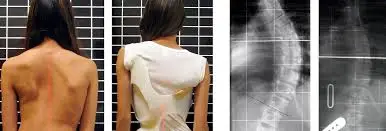When Professor Wilhelm Conrad Roentgen discovered the x-ray while working with a cathode –ray tube in his laboratory in 1895, medical journals of the day immediately understood the significance of this discovery. This ray could pass through most substances, casting shadows of solid objects.
What most excited the physicians and dentists about Roentgen’s discovery was that the ray could pass through the tissue of humans, but not bones and metal objects. According to an article on the history of radiography, “Public fancy was caught by this invisible ray with the ability to pass through solid matter, and, in conjunction with a photographic plate, provide a picture of bones and interior body parts.
“Scientific fancy was captured by the demonstration of a wavelength shorter than light. This generated new possibilities in physics, and for investigating the structure of matter. Much enthusiasm was generated about potential applications of rays as an aid in medicine and surgery. Within a month after the announcement of the discovery, several medical radiographs had been made in Europe and the United States, which were used by surgeons to guide them in their work. In June 1896, only 6 months after Roentgen announced his discovery, X-rays were being used by battlefield physicians to locate bullets in wounded soldiers.”
Unfortunately, with most advances in medicine, there are unintended consequences which are discovered later. Such is the case with effect x-rays can have on the body.
The Challenge of Traditional X-Rays
As have most physicians, Dr. Isador Lieberman, who is a spine surgeon at Texas Back Institute, has relied on x-ray images to diagnose and treat patients with back injuries and disease. However, he is also aware of the potential for harm from these rays.
“The more a patient is exposed to x-rays, the more something untoward is likely to happen,” he noted in a recent interview. “Exposure to traditional x-rays can cause skin burns and cataracts. There is also a risk of cancer in tissue that is exposed.
“The risks from radiation are cumulative,” he noted. “And the less we are exposed to it, the better.”
The EOS X-Ray Technology
Dr. Lieberman was instrumental in helping to bring an innovative x-ray machine to Texas Health Plano. It is designed to emit less radiation.
“The EOS machine gives physicians a head-to-toe image,” he said. “It scans the entire patient with a micro-dose of radiation. This allows us to see an image of the entire skeleton with less than one-tenth the radiation of a standard spine x-ray. It also allows us to generate a three dimensional rendering of the spine that can be used to plan surgery or determine if there are any structural changes over time”.
“This is made possible by the computer-processing capacity of the EOS machine,” he said. “It can process the micro-dose of the radiation and deliver a true, three-dimensional image of the spine. This allows me to examine the image, measure it, manipulate the image – getting views from the side, from the top, when the patient is lying down and any number of other ‘looks’ – then make a more informed decision about the condition of the patient.
“Since I deal with a lot of kids in my practice, I am very conscious of the dangers of exposing children to radiation. With this EOS technology, I can essentially take ten x-rays a year and still not expose a child to as much radiation as one traditional x-ray.”
Miracles and Wonder
In his song, “Boy in the Bubble,” Paul Simon wrote:
“These are days of miracles and wonder.”
Dr. Lieberman agrees with this sentiment of this song, especially as it relates to medicine. “I go home at night and say, ‘what we did today was amazing!’ I also know that ten years from now, when I look back on what we are capable of doing today, I will probably think it was primitive,” he laughed.
“It’s all an evolution. We have so much computing power and technology now that allows us to peer into the human body at the cellular level and soon at the molecular level. Physicians and researchers are only limited by our imaginations now. The technology is there,” he concluded.
To hear the complete interview with Dr. Lieberman, listen to our SpineTalk podcast below.
If you are experiencing back pain, contact us to schedule an appointment with the spine experts who combine cutting edge technology with patient-centric care.


